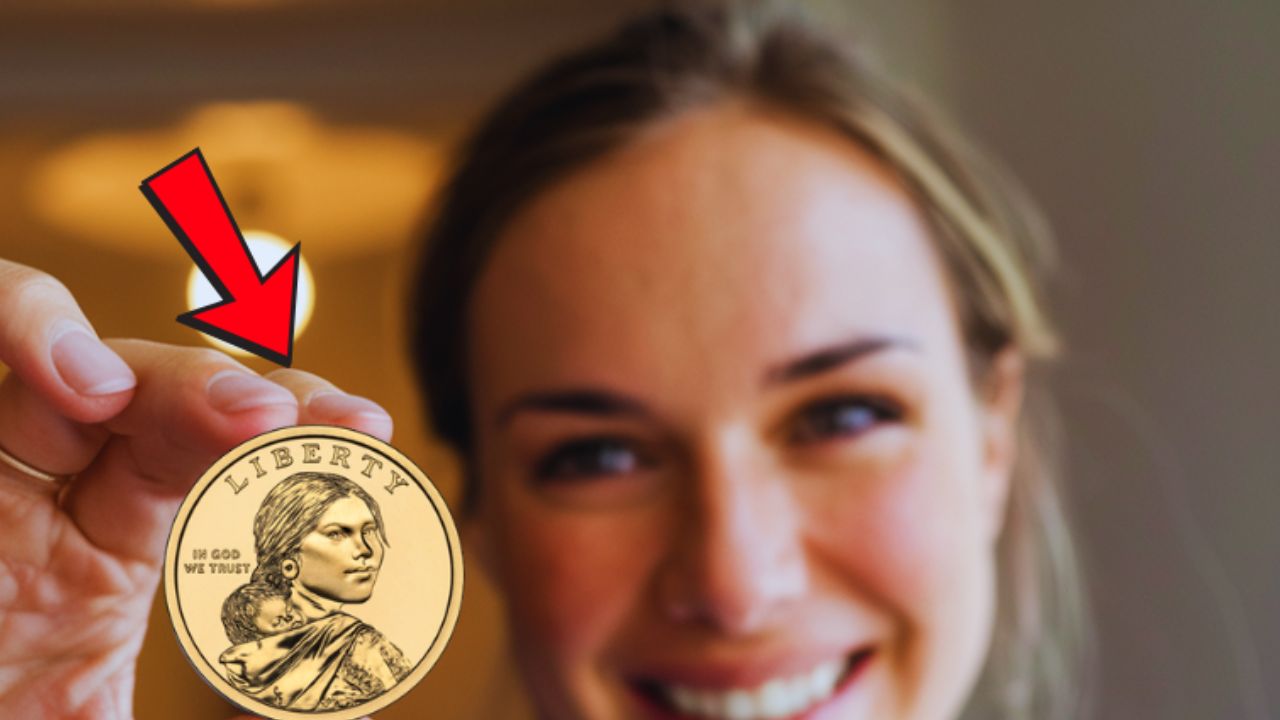In the fascinating world of coin collecting, a remarkable discovery has just made waves. A rare Sacagawea dollar featuring an experimental rim—one of only three known examples—recently sold for an astounding $690,000 at a prominent U.S. coin auction. This sale has reignited excitement among collectors and brought fresh attention to the elusive early variations of the Sacagawea golden dollar series.
What Makes This Sacagawea Dollar Truly Unique?
At first glance, this coin looks like a typical Sacagawea dollar. First issued in 2000, the Sacagawea dollar replaced the Susan B. Anthony dollar and features the iconic image of Sacagawea, the Shoshone woman, carrying her infant son, Jean Baptiste.
But what distinguishes this coin is not its design—it’s the edge.
The Rare “Experimental Rim” Feature
This particular coin boasts an “experimental rim,” a rare characteristic from the U.S. Mint’s early production trials. During the initial phase of Sacagawea dollar production, the Mint experimented with different rim designs and production techniques to evaluate durability and aesthetics. Most of these experimental prototypes were never released to the public and were either destroyed or retained by the Mint.
Today, only three Sacagawea dollars with this unique rim are known to exist, making them rarer than many famous error coins from the 20th century.
Discovery and Record-Breaking Auction
The coin was anonymously consigned to a well-respected coin auction house specializing in rare U.S. currency. Following months of anticipation, collectors from across the nation and abroad joined the bidding, both online and in person.
The competition was fierce, and the final hammer price soared to an incredible $690,000 — far surpassing initial estimates. Experts attribute this remarkable price to the coin’s rarity and its pristine condition, graded MS68 by the Professional Coin Grading Service (PCGS).
Why Are Experimental Coins So Valuable?
Experimental coins offer a unique glimpse behind the scenes of the U.S. Mint’s coin development process. These prototypes reveal the testing, trials, and innovation involved in creating new currency designs.
Since these coins were never intended for public release, their rarity and mysterious origins make them highly sought after by collectors and historians alike.
In this case, the distinctive rim design not only confirms the coin’s prototype status but also highlights the early evolution of the Sacagawea dollar series.
Could More Experimental Coins Be Hidden Out There?
While only three examples are confirmed, there’s always a chance others remain undiscovered. Many collectors are now carefully examining their collections, hoping to spot an unusual rim or edge that could signal a rare find.
History has shown that ultra-rare coins often surface years or even decades after they were minted. Forgotten coin rolls, overlooked drawers, or estate sales have repeatedly revealed valuable surprises.
Reviving Interest in the Sacagawea Dollar Legacy
This landmark sale shines a spotlight on the Sacagawea dollar, a coin that has often been overshadowed by more widely circulated U.S. coins. Although it never gained widespread mainstream use, the series has developed a dedicated following among collectors, especially those fascinated by minting varieties and unique production anomalies.
With this record-setting auction, the Sacagawea dollar joins a select group of modern U.S. coins commanding near seven-figure sums due to their rarity and historical significance.
Final Thoughts
For collectors and enthusiasts, this sale is more than just a headline—it’s a powerful reminder that the rarest treasures can lie in the smallest details, like the rim of a coin. Whether you’re an experienced numismatist or simply curious about coin collecting, stories like this reveal the rich layers of history, mystery, and value hidden within U.S. currency.
